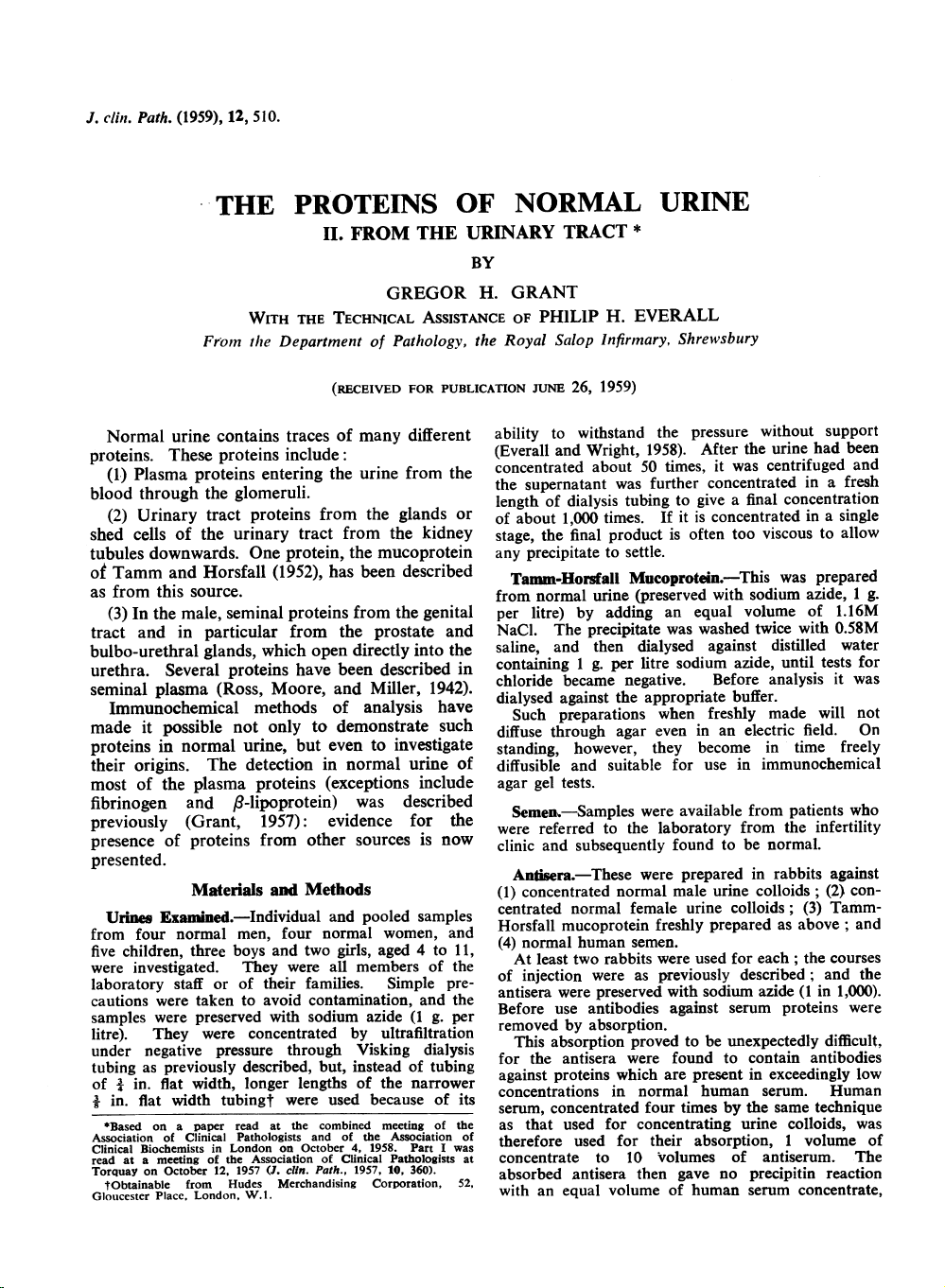
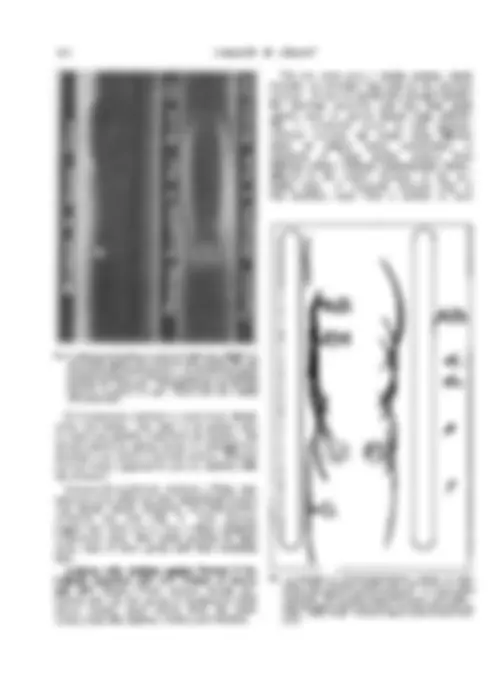
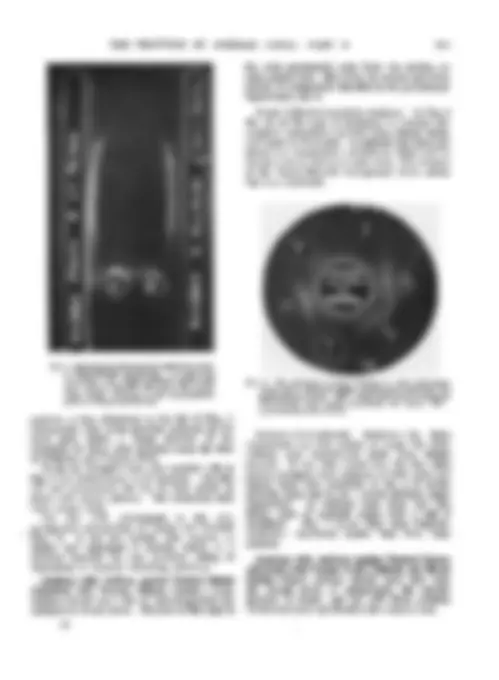
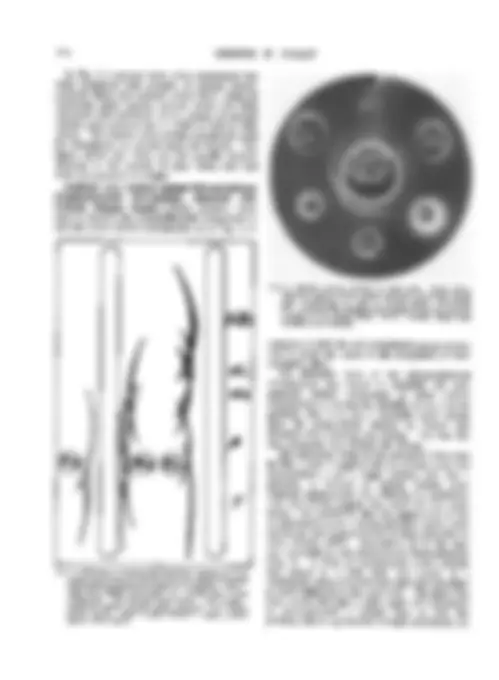
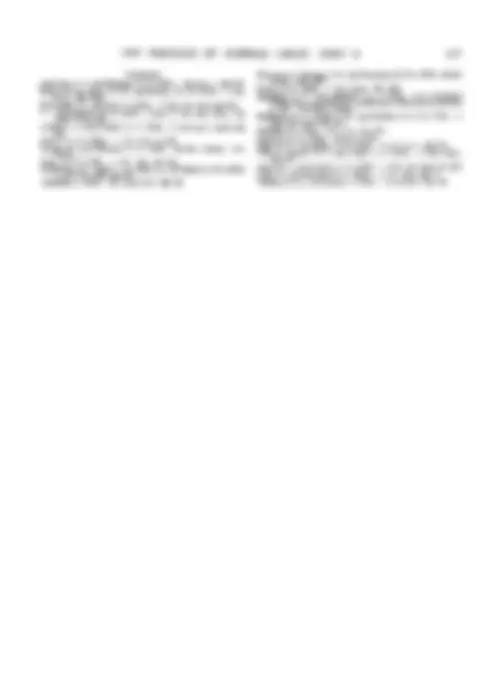


Study with the several resources on Docsity

Earn points by helping other students or get them with a premium plan


Prepare for your exams
Study with the several resources on Docsity

Earn points to download
Earn points by helping other students or get them with a premium plan
Community
Ask the community for help and clear up your study doubts
Discover the best universities in your country according to Docsity users
Free resources
Download our free guides on studying techniques, anxiety management strategies, and thesis advice from Docsity tutors
A study conducted by Gregor H. Grant and Philip H. Everall from the Department of Pathology at the Royal Salop Infirmary in Shrewsbury. The researchers used immunochemical methods to analyze normal urine and investigate the origins of various proteins present in the urine. They detected the presence of Tamm-Horsfall mucoprotein, which was prepared from normal urine, and investigated the use of antisera against normal urine colloids and semen to distinguish between urinary tract proteins and seminal proteins.
What you will learn
Typology: Study notes
1 / 8

This page cannot be seen from the preview
Don't miss anything!





J. cliit. Path. (1959),^ 12,^ 510.
From the Department of^ Pathology,^ the^ Royal Salop^ Infirmary,^ Shrewsbury
(RECEIVED FOR^ PUBLICATION^ JUNE^ 26, 1959)
Normal urine contains traces of many different proteins. These^ proteins^ include:
(2) Urinary tract proteins from the^ glands^ or shed cells of the urinary tract from^ the kidney
ot Tamm and Horsfall (1952), has been described as from^ this^ source. (3) In the male, seminal proteins from^ the^ genital tract and in particular from the^ prostate^ and bulbo-urethral glands, which open directly^ into the urethra. Several proteins have been described^ in seminal plasma (Ross, Moore, and Miller,^ 1942).
made it possible not only to demonstrate such proteins in^ normal^ urine,^ but^ even^ to^ investigate their origins. The detection in normal urine^ of most of the plasma proteins (exceptions include fibrinogen and (^) fl-lipoprotein) was^ described
presence of proteins from other sources is^ now presented.
Materials and Methods Urines Examined.-Individual^ and^ pooled^ samples from four normal men, four normal women, and five children, three boys and two girls, aged 4 to^ 11, were investigated. They were all^ members^ of^ the laboratory staff or^ of^ their^ families.^ Simple^ pre- cautions were^ taken^ to^ avoid^ contamination,^ and^ the samples were preserved with sodium azide (1 g. per litre). They were concentrated by ultrafiltration under negative pressure through^ Visking^ dialysis tubing as^ previously described,^ but,^ instead^ of^ tubing of 3 in. flat width, longer lengths of the narrower in. flat width tubingt were used because of its *Based on a paper read at the combined meeting of the Association of Clinical Pathologists and of the Association of Clinical Biochemists in London on October 4, 1958.^ Part I^ was read at a meeting of the Association of^ Clinical^ Pathologists^ at Torquay on October 12, 1957 (J. cln. Path.,^ 1957,^ 10,^ 360). tObtainable from Hudes Merchandising Corporation,^ 52, Gloucester Place, London, W.I.
ability to withstand^ the^ pressure^ without^ support (Everall and Wright, 1958).^ After the^ urine^ had been
the supernatant was^ further^ concentrated^ in^ a^ fresh length of dialysis tubing^ to^ give^ a^ final^ concentration
stage, the final^ product^ is^ often^ too^ viscous^ to^ allow any precipitate to^ settle.
from normal^ urine^ (preserved^ with^ sodium azide,^1 g. per litre) by adding^ an^ equal^ volume^ of^ 1.16M
saline, and^ then^ dialysed^ against^ distilled^ water containing 1 g.^ per^ litre sodium^ azide, until^ tests^ for chloride became negative. Before analysis it^ was dialysed against^ the^ appropriate^ buffer. Such preparations when freshly made^ will^ not diffuse through agar even in an electric field.^ On standing, however, they become in time^ freely diffusible and suitable for use in immunochemical agar gel tests.
were referred^ to^ the^ laboratory from^ the^ infertility clinic and^ subsequently^ found^ to^ be^ normal.
(1) concentrated normal male urine^ colloids; (2)^ con- centrated normal female urine^ colloids;^ (3)^ Tamm- Horsfall mucoprotein freshly^ prepared^ as^ above; and (4) normal human semen. At least two rabbits were used for each; the courses of injection were as previously described; and^ the
Before use antibodies^ against^ serum^ proteins^ were removed by absorption. This absorption proved to be unexpectedly difficult, for the antisera were found to contain^ antibodies against proteins which^ are^ present^ in^ exceedingly^ low concentrations in normal human serum. Human
as that used for concentrating urine^ colloids,^ was therefore used^ for^ their^ absorption,^1 volume^ of
absorbed antisera then gave no precipitin reaction with an equal volume of^ human serum^ concentrate,
an equal volume of fresh serum, or 1/20 volume of fresh (^) serum. In (^) addition to the above antisera, rabbit antisera against normal human serum (^) proteins were required for the analyses of normal human serum run in parallel with the urine analyses to indicate the relative mobilities of the serum and urinary tract proteins.
Immunochemical Analyses.-For the simple agar gel precipitin tests (Ouchterlony, 1949) Petri dishes containing pH 7.4 phosphate agar were used (Gell, 1955). Then 27.5 g. potassium dihydrogen phosphate, 17.0 g. sodium chloride, 8.0 g. potassium hydroxide, and (^) 15 g. agar were (^) dissolved in 2 litres of distilled water and filtered while hot (^) through a bed (^) of "hyflo super cell " under reduced pressure. Sodium azide was added to give a final concentration of (^1) g. per litre and the agar sterilized at 5 lb. pressure for 15 minutes. The immuno-electrophoretic analyses were carried out by the method of Grabar and Williams (1955) modified as previously described (Grant, 1957).
Results
Colloids Absorbed with Normal Serum.-These
except those in blood serum.
illustrates such an analysis; two samples of male
FIG. (^) 1.-Comparison between non-serum proteins of male urine, female urine, and Tamm-Horsfall mucoprotein in (^) peripheral cups. In the centre cup is shown antiserum against normal male urine colloids (absorbed with normal human serum). l(Direct print of Ouchterlony plate stained with azocarmine.)
FIG. (^) 2.-Comparison between male (M.U.), female urine colloids (F.U.), and semen (Se), using the same antiserum. (Similar direct print.) with (^) arl antiserum made against male urine colloids, prepared and absorbed as described above. The urine (^) concentrates form multiple precipitin lines, two of which (^) are particularly well marked. One of the latter gives the " (^) reaction of identity" with the mucoprotein preparation. Similar results were obtained with the antisera made against female urine concentrates. In Fig. 2 urine concentrates have been com- pared with normal semen using a similar antiserum. As expected the antiserum contains antibodies to several seminal proteins and these proteins are only minor (^) components of the urine protein; their precipitin lines cut (^) those of the main urinary tract proteins, including that due to the Tamm-Horsfall mucoprotein, a protein evidently absent from semen.
against female urine concentrates, led to a further and (^) unexpected finding, namely, several trace components (^) common to semen and to female urine as well (^) as to (^) male urine. On the basis of
components can be (^) distinguished:
urine but (^) not present in semen: these presumably arise from the (^) upper urinary tract; they include the mucoprotein of Tamm and Horsfall as well as
(2) Components common only to male urine and semen: (^) they are apparently only present in traces
groups of components classified in the preliminary
the use of this type of antiserum to compare the antigenic components of male urine, female urine, and semen is illustrated. It confirms that there are about four components common to semen and to
of the Tamm-Horsfall mucoprotein from semen was also confirmed.
FIG. 5.-Identificationofcomponent antigenicallysimilar to Tamm-Horsfall mucoprotein. U.=male urine concentrate. Left trough= antiserum against male urine colloids absorbed with serum and semen. Right trough=antiserum to the salt-precipitated protein of Tamm and Horsfall.
Comparison with^ serum^ proteins^ analysed^ on^ the
dense with certain antisera. The (^) remaining lines
(Fig. 5). It has two humps with maxima^ as shown and sometimes it extends faintly to^ a position opposite the cup, probably owing to
antisera should react^ with^ all seminal^ proteins not
3B
FIG. 6.-The non-serum proteins common to urine and semen. Centre shows antiserum against normal semen (absorbed with normal human serum). M.U. =male urine colloid concentrate. F.U.=female urine colloid concentrate. Se=semen. P.S.= pooled normal serum control.
components are only present in traces,^ the urine
female urine had mobilities in the a f8 serum
Absorbed with Female Urine Coiloids and Blood
(Tamm-Horsall) Mucoprotein Absorbed (^) with
FIG. 7.-Diagram of (^) immuno-electrophoretic analysis of lower urinary tract non-serum (^) proteins (left) with (^) outline of normal blood serum protein pattern (right) for (^) comparison. M.U. = male urine colloid concentrate. (^) F.U.=female urine colloid concentrate. P.S.==normal blood (^) serum. Left trough= antiserum against normal semen (^) absorbed with normal human serum. Right trough=antiserum against normal human blood serum.
FIG. (^) 8.-Specific seminal (^) proteins in male urine. Centre shows antiserum (^) against normal semen absorbed with (^) pooled female urine (^) concentrates as well as normal serum. (^) Se=semen. P.F.=prostatic fluid (collected (^) post mortem from (^) the outer cut surfaces of (^) the lateral (^) lobes). S.V.F.=seminal vesicle (^) fluid (collected post (^) mortem).
compare it^ with^ the^ salt-precipitated (^) preparations, and to (^) study the cause (^) of the (^) elongation of their precipitin lines. The diffusible form (^) of the (^) salt-precipitated mucoprotein was^ found to resemble (^) the anti- genically similar^ component of urine (^) colloid concentrates in (^) having the (^) mobility of an a (^) serum globulin, that^ is^ to (^) say, a (^) mobility much (^) slower than the (^) preparations studied (^) by Tamm and Horsfall after (^) freezing and (^) drying. The (^) line was also (^) elongated but without the (^) humps. The (^) elongated (^) shape of the (^) precipitin lines (^) seen in (^) Figs. 3 and 5 (^) suggests that in normal urine (^) this mucoprotein is^ not a (^) single protein, but, like y globulin, a^ mixture^ of (^) closely related (^) ones, identical (^) antigenically but (^) differing in mobilities. The (^) two (^) humps suggest that there are two main forms. (^) The (^) possibility that the appearance is due to (^) adsorption on (^) to a serum (^) globulins seems (^) ruled out (^) by the low (^) concentrations of these (^) globulins in urine (^) (Grant, 1957). Adsorption on to the agar was (^) excluded (^) by two-dimensional (^) electrophoresis (Fig. 9). A (^) drop of concentrated (^) urine colloids was (^) placed in a (^) hole near one corner (^) of a rectangular plate of^ barbiturate (^) agar and submitted to (^) electrophoresis in the usual (^) way. The (^) plate was then (^) turned (^) through a (^) right angle and submitted to (^) electrophoresis a second time so (^) that the proteins moved^ up between (^) troughs previously cut
Alb
o
0(
A
It
-.9dommoll.-
I I I I I I I I
FIG. 10.-Comparison between male urine^ colloid^ concentrate^ (M.U.) and mucoprotein^ preparations^ precipitated^ with sodium chloride (T-H), cetyl trimethyl ammonium bromide (cetab), and^ benzoic acid (B1 and B2). Centre^ shows antiserum^ to^ male^ urine^ colloids (absorbed with human blood serum). greater than that of albumin. Boyce,^ Garvey,^ and
with the mobility of^ an^ a^ serum^ globulin,^ in^ agree- ment with the findings above.^ Anderson^ and
globulin and^ a^ molecular^ weight^ of^ about^ 30, (see Maclagan^ and^ Anderson,^ 1958).^ Di^ Ferrante and Rich^ (1956)^ used^ cetyl^ trimethyl^ ammonium
Tamm and^ Horsfall's^ product^ in^ its^ biological activity and^ chemical^ analysis (Di^ Ferrante^ and Popenoe, 1957),^ but^ was^ found^ by^ Maxfield^ (1958) to have a^ molecular^ weight^ of^ 1.5^ million. Presumably all these^ forms^ have^ a^ precursor^ in common. Their antigenic similarity^ (see Fig. 10) is good evidence^ that^ this^ is^ so,^ as^ well^ as^ the^ fact
mobility like the corresponding component^ in concentrated urine^ colloids; they^ also^ have^ the same ultra-violet adsorption^ spectrum^ (maximum
and of Di Ferrante and Rich.
is the^ naturally secreted^ form,^ a^ small^ molecular
urinary tract components also^ seem^ elongated^ and
in normal^ serum,^ have^ been^ demonstrated
do occur between^ these^ various^ mucoprotein
This mucoprotein and^ possibly some^ of^ the
groups of^ closely^ related proteins^ rather^ than^ as
We should^ like^ to^ thank^ Mr.^ G.^ Wright^ and Miss M. (^) Carpenter for technical assistance^ and^ Mr. R.^ Ross for Figs. 4 and 7.
REFERENCES Anderson, A. J., and Maclagan, N. F. (1955). Biochem. J., 59, 638. Boyce, W. H., Garvey, F. K., and Norfleet, C. M. (1954). J. clin. Invest., 33, 1287. Di Ferrante, N., and Rich, C. (1956). J. Lab. clin. Med., 48, 491. and Popenoe, E. A. (1957). Scand. J. clin. Lab. Invest., 10, Suppl. 31, p. 268. Everall, P. H., and Wright, G. H. (1958). J. med. Lab. technol., 15,
Gell, P. G. H. (1955). J. clin. Path., 8, 269. Grabar, P., and Williams, C. A. (1955). Biochim. biophys. Acta, 17, 67. Grant, G. H. (1957). J. clin. Path., 10, 360. Hamerman, D., Hatch, F. T., Reife, A., and Bartz, K. W. (^) (1955). J. Lab. clin. Med., 46, 848. Heremans, J. (1958). Rev. belge Path., 26, 264.
Heremans, (^) J., Vaerman, J. P., and Heremans, M. Th. (1959). Nature (Lond.), 183, 1606. Kerby, G. P. (1954). J. clin. Invest., 33, 1168. Maclagan, N. F., and Anderson, A. J. (1958). Ciba Foundation Symposium on the Chemistry and Biology of Mucopolysaccharides, p. 284. Churchill, London. Markham, R. L., Jacobs, J. H., and Fletcher, E. T. D. (1956). J. Lab. clin. Med., 48, 559. Maxfield, M. (^) (1958). Fed. Proc., 17, 106, Ouchterlony, 0. (1949). Lancet, 1, 346. Rigas, D. A., and Heller, C. G. (1951). J. clin. Invest., 30, 853. Ross, V., Moore, D.^ H., and Miller, E. G. (1942). J. biol. Chem., 144, 667. Slater, R. J., and Kunkel, H.^ G. (1953). J. Lab.^ clin. Med., 41, 619. Tamm, I., and Horsfall, F. L. (1952). J. exp. Med., 95, 71. Williams, C. A., and Grabar, P. (1955). 1. Immunol., 74, 158.